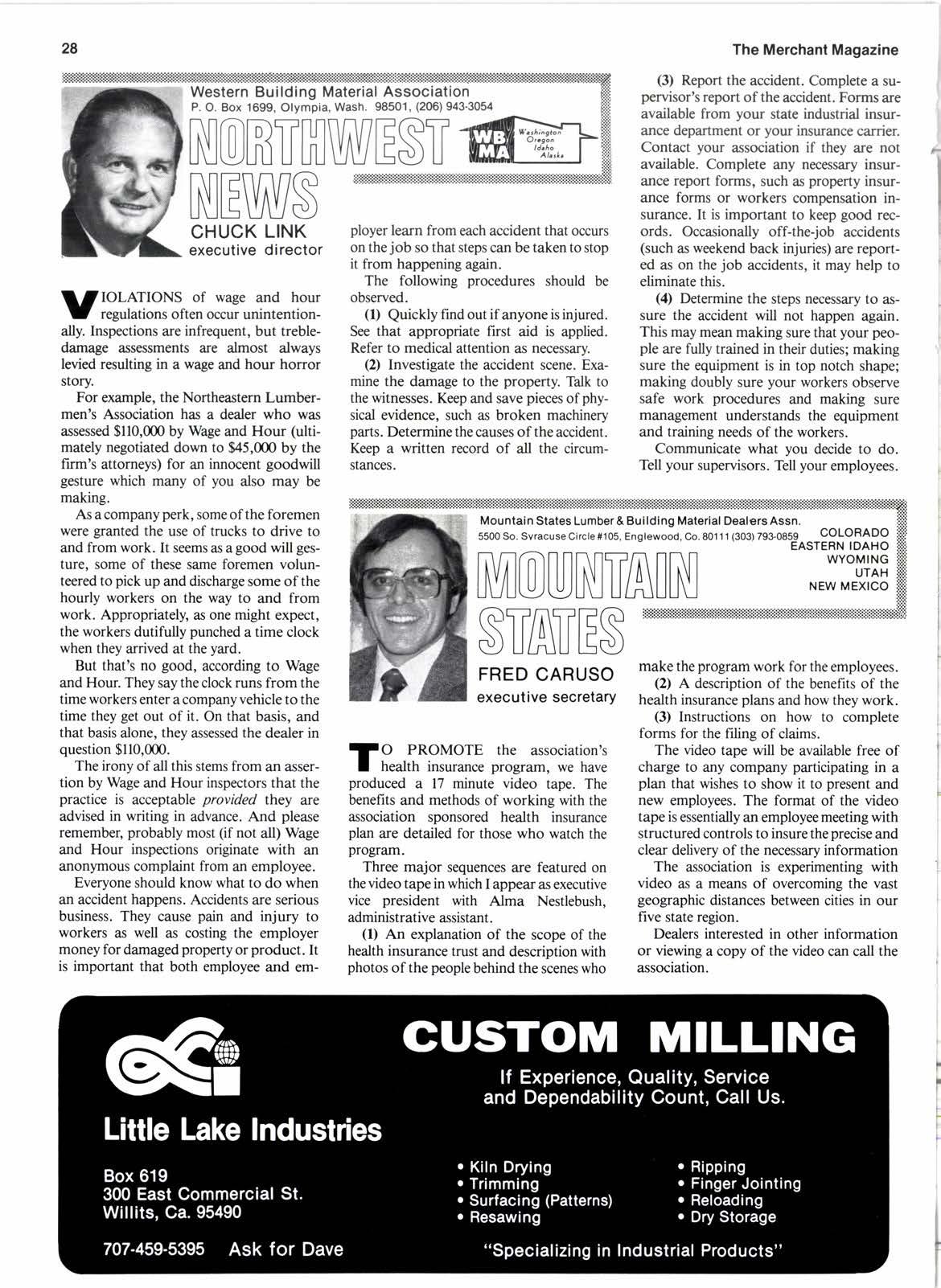
2 minute read
NEWS
CHUCK LINK executive director
ITIOLATIONS of wage and hour
U regulations often occur unintentionally. Inspections are infrequent, but trebledamage assessments are almost always levied resulting in a wage and hour horror story.
For example, the Northeastern Lumbermen's Association has a dealer who was assessed $ll0,m0 by Wage and Hour (ulti mately negotiated down to M5,000 by the firm's attorneys) for an innocent goodwill gesture which many of you also may be making.
As acompanyperk, someof the foremen were granted the use of trucks to drive to and from work. It seems as a good will gesture. some of these same foremen volunteered to pick up and discharge some of the hourly workers on the way to and from work. Appropriately, as one might expect, the workers dutifully punched a time clock when they arrived at the yard.
But that's no good, according to Wage and Hour. They say the clock runs from the time workers enter a company vehicle to the time they get out of it. On that basis, and that basis alone, they assessed the dealer in question $110,0m.
The irony of all this stems from an assertion by Wage and Hour inspectors that the practice is acceptable provided they are advised in writing in advance. And please remember, probably most (if not all) Wage and Hour inspections originate with an anonymous complaint from an employee.
Everyone should know what to do when an accident happens. Accidents are serious business. They cause pain and injury to workers as well as costing the employer money for damaged property or product. It is important that both employee and em- ployer learn from each accident that occus on the job so that steps can be taken to stop it from happening again. The following procedures should be observed.
(1) Quickly find out if anyone is injured. See that appropriate first aid is applied. Refer to medical attention as necessary.
(2) Investigate the accident scene. Examine the damage to the property. TAk to the witnesses. Keep and save pieces of physical evidence, such as broken machinery parts. Determine the causes of the accident. Keep a written record of all the circumstances.
(3) Report the accident. Complete a supervisor's report of the accident. Forms are available from your state industrial insurance department or your insurance carrier. Contact your association if they are not available. Complete any necessary insurance report forms, such as property insurance forms or workers compensation insurance. It is important to keep good records. Occasionally off-the-job accidents (such as weekend back injuries) are reported as on the job accidents, it may help to eliminate this.
(4) Determine the steps necessary to assure the accident will not happen again. This may mean making sure that your people are fully trained in their duties; making sure the equipment is in top notch shape; making doubly sure your workers observe safe work procedures and making sure management understands the equipment and training needs of the workers. Communicate what you decide to do. Tell your supervisors. Tell your employees.










